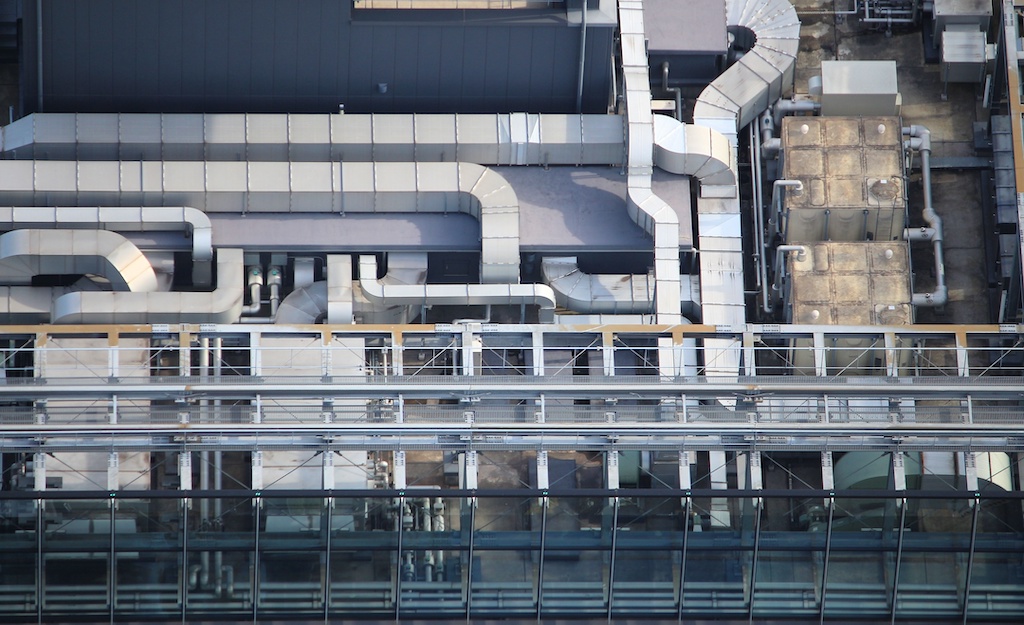Virtually all medium to large commercial buildings in the world have a HVAC system. Some have been installed 40 years ago, and some are brand-new. However new innovations in both software and hardware are ensuring that one can maximise these systems whether old or new for optimal occupier comfort and energy efficiency. Not only can buildings ensure healthy people but a healthier planet too.
With the rise in consciousness of the importance and effectiveness of a building’s HVAC and the rising energy costs (for which HVAC can make up 40% of a buildings energy cost), future industry trends have never been more important. We look at five trends shaping the future of commercial HVAC:
Smart HVAC Systems
Smart HVAC systems are transforming the industry by adjusting temperature and airflow based on occupancy, weather and preferences to reduce energy consumption and save money. Predictive maintenance improves system performance and provides real-time data for informed decision-making. Smart HVAC systems create a more connected environment and improve occupant satisfaction and productivity, making them attractive to businesses and homeowners. With continued technological advancements, we can expect even more advanced features and capabilities that will further enhance the benefits of smart HVAC systems.
Internet of Things (IoT)
The rise of IoT is expected to revolutionise the HVAC industry, providing advanced monitoring and control of HVAC systems, improving energy efficiency and reducing costs. IoT connectivity allows for real-time data collection and analysis, creating a more efficient and connected environment through the use of sensors, smart devices, and cloud-based monitoring and control systems. Occupancy sensors can adjust temperature and airflow based on the number of people in a room, while predictive maintenance detects faults and predicts maintenance needs, reducing downtime and improving system performance. The ability to remotely control and monitor HVAC systems from anywhere and access real-time data and analytics allows for informed decision-making about HVAC system operation, maintenance, and upgrades.
Artificial intelligence
AI is set to transform the HVAC industry by improving energy efficiency, reducing costs and providing advanced monitoring and control capabilities. Through the use of machine learning algorithms, predictive analytics and digital twins, AI can detect patterns in HVAC system performance, identify potential issues and optimise HVAC system operation based on occupancy, weather and other factors. This helps to create a more personalised, comfortable environment while reducing energy consumption and costs. The use of digital twins also allows for simulation and optimization of HVAC system performance, reducing the risk of system downtime and associated costs. Overall, AI will revolutionise the HVAC industry, with the potential for even more advanced features and capabilities in the future.
Mobile access
Mobile access to HVAC systems is transforming the industry by enabling remote monitoring and control. Facility managers and building owners can respond to changes in occupancy, weather or other factors, improving system efficiency and reducing energy consumption and costs. Mobile access also enhances transparency and accountability, allowing them to track energy consumption and make informed decisions. It improves system reliability by enabling prompt issue detection and reducing downtime, and allows for better collaboration among stakeholders. Mobile access also helps meet regulatory requirements and ensure HVAC systems are operating safely and efficiently. Overall, mobile access is a game-changer for the HVAC industry.
Integrated building systems
Integrated building systems will revolutionise the HVAC industry by coordinating HVAC systems with other building systems, such as lighting, security and access control, for greater energy efficiency and cost savings. Occupancy sensors integrated with lighting and HVAC systems can adjust temperature, airflow, and lighting, and security-integrated HVAC systems can adjust temperature and airflow based on security needs. Integrated building systems offer visibility and control of building operations to improve system reliability and reduce downtime. Cloud-based platforms provide remote monitoring and control of building systems from mobile devices. Overall, integrated building systems provide coordinated operation with other building systems, reducing costs, improving energy efficiency and enhancing building performance.
At Incube Space they developed CubeOS, a predictive HVAC optimisation platform that taps into all five HVAC trends shaping the future of the industry to ensure users remain at the forefront of the market.
CubeOS makes HVAC smart by putting data from IoT to good use. Their proprietary machine learning models analyse real-time data to predict optimisations that need to be made to the HVAC system to ensure maximum efficiency and optimal indoor air quality and thermal comfort for occupiers. Integrating with the BMS and consolidating all the space utilisation and indoor air quality insights into one platform means the most accurate optimisations. It also means pro-active optimisations, which drastically cuts down on power consumption. Not only does this cut bills, but also the negative impact on the planet from emissions. Remember, reducing the use of resources, is the first step to a better planet. Finally, CubeOS can be accessed from anywhere with an Internet connection so if a team has the permissions and needs to see or make changes to their system they can do without having to make a trip down to the basement from wherever they are.
To learn more, visit www.incube.space





